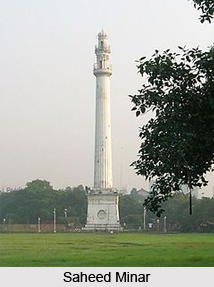 Moobaruck Begum was the most prominent among Ochterlony`s women. She was known as the "Bebee Mahruttun Moobaruck ul Nissa Begum", a former Brahmin dancing girl from Pune, now in Maharashtra who had converted to Islam.
Moobaruck Begum was the most prominent among Ochterlony`s women. She was known as the "Bebee Mahruttun Moobaruck ul Nissa Begum", a former Brahmin dancing girl from Pune, now in Maharashtra who had converted to Islam.
Nickname of Moobaruck Begum
Moobaruck Begum was nicknamed as Generallee Begum. She was favourite of David Ochterlony. She was the mother of his youngest children. As such, she took clear precedence over the rest of the household. She was considered to be a devout Muslim, having once applied for leave to make the hajj to Mecca.
Moobaruck Begum as a Person
Moobaruck Begum was seen as the dominant personality in the relationship. This led one observer to remark that making Sir David the Commissioner of Delhi was the same as making Generallee Begum. She was one of the Ochterlony`s mistresses. She is the mistress now of everyone within the walls. As a result of her influence, Sir David was considered raising his children as Muslims, and when his two daughters by Moobaruck Begum had grown up, he adopted a child from the family of the Nawabs of Loharu, one of the leading Muslim families of Delhi. Raised by Moobaruck, the girl went on to marry her cousin, a nephew of the famous Urdu poet of the medieval era, Mirza Ghalib.
Power of Moobaruck Begum
Moobaruck Begum even seems to have set herself up as a power in her own right and to have formed her own independent foreign policy. At one point, it was reported that "Mobarruck Begum, alias Generalee Begum, fills the papers with accounts of the Nizars and Khiluts.
Non Acceptance of British and Mughals
However, in spite of all her power and high status, Moobaruck Begum was widely unpopular among the British and the Mughals alike. Moobaruck Begum offended the British by calling herself "Lady Ochterlony" and on the other hand, also offended the Mughals by awarding herself the title "Qudsia Begum", a title previously reserved for the Emperor`s mother.
Moobaruck Begum after the death of David Ochterlony
After the death of David Ochterlony, she inherited Mubarak Bagh, an Anglo-Mughal garden tomb which Ochterlony had built in the north of Old Delhi. But for her intense unpopularity, she combined with her background as a dancing girl ensured that no Mughal gentleman would use her garden. She was buried there and it is now one of the tourist attractions in Delhi.
Related Articles
Capital Cities of India
Kolkata
History of Kolkata
Culture of Kolkata
Economy of Kolkata
West Bengal, Indian State
Alipur, Kolkata



















